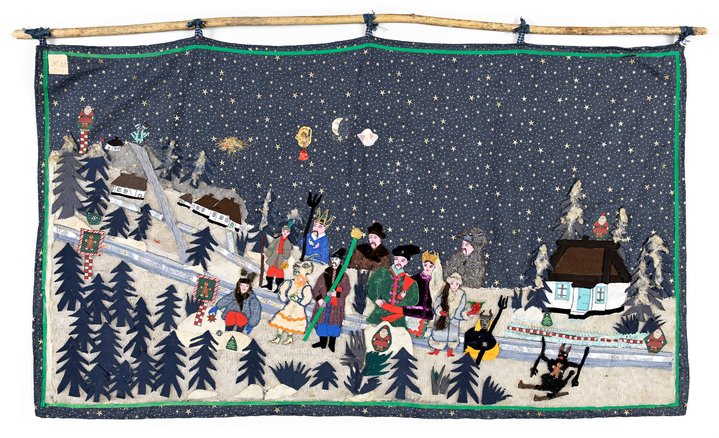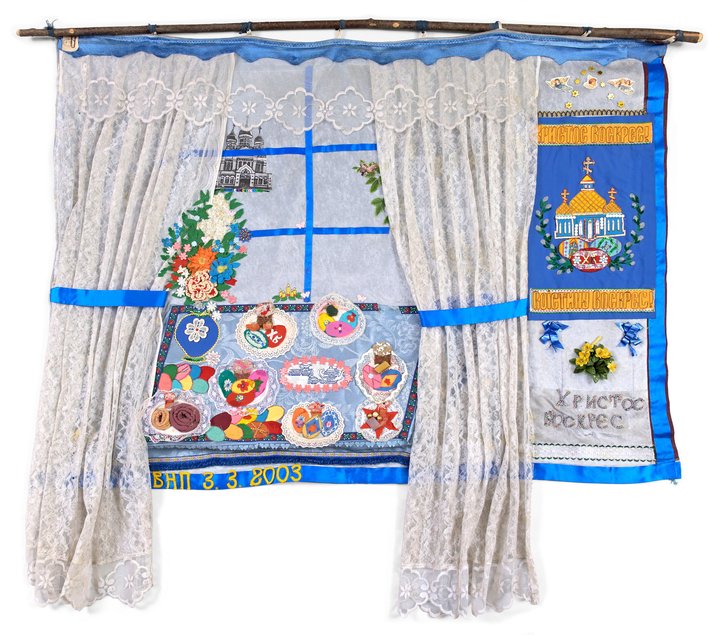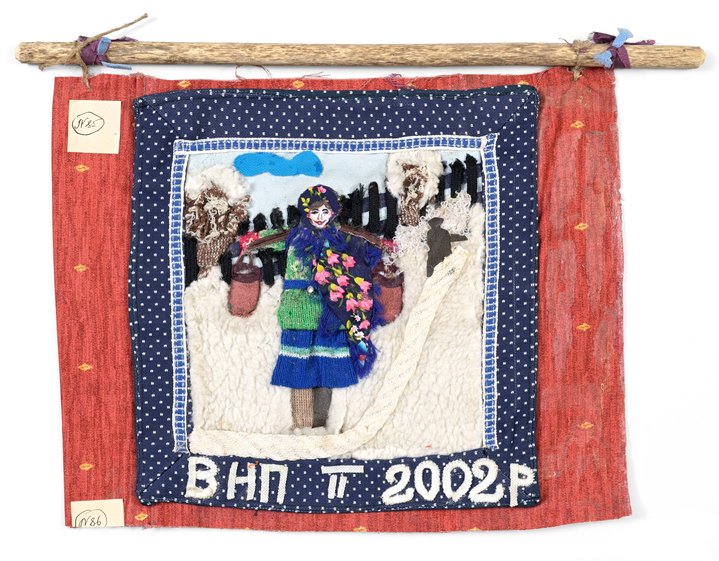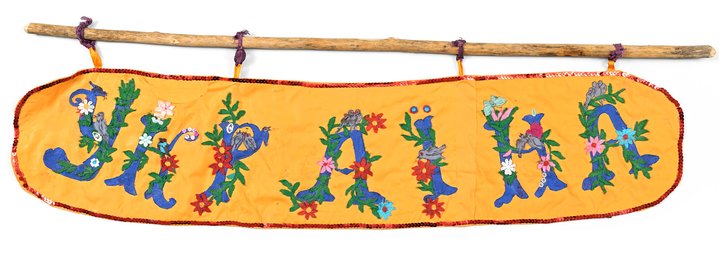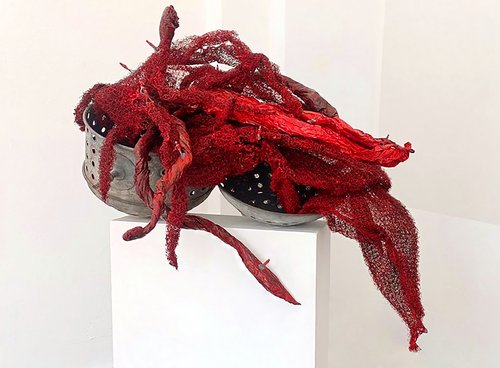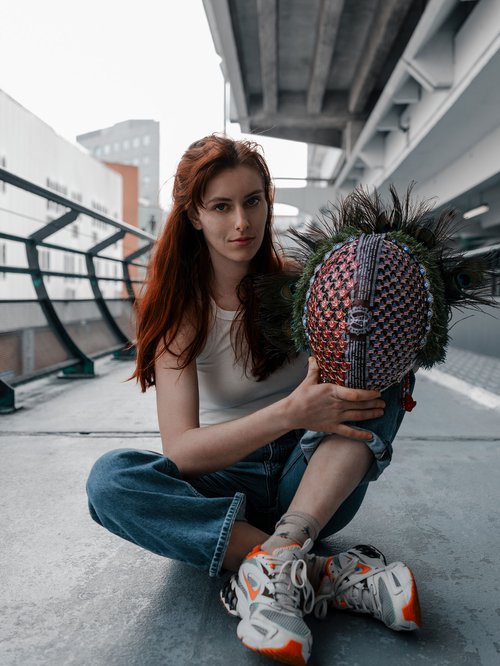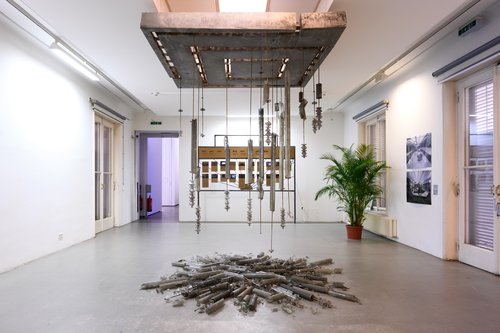Colourful World of Ukrainian Self-Taught Artist Nina Vynnik on View in Tallinn

Nina Vynnik. From the 'Visiting Grandma I - VIII' series. Courtesy of Temnikova & Kasela Gallery
The Temnikova & Kasela gallery in Tallinn has opened a solo retrospective show of the work of the late textile artist Nina Vynnik who became an artist at the age of 70.
Nina Petrovna Vynnik's (1928-2011) artistic odyssey came late in life, a testament to the indomitable human spirit in the face of successive historical upheavals. From the Dnepropetrovsk region of Ukraine, Vynnik's life journey traversed the tumultuous landscapes of World War II and the ensuing decades, weaving a narrative that eventually merged personal resilience with artistic prowess.
Initiated into harsh realities of life at a young age, having lost her mother as a small child and then rejected by her stepmother, Vynnik's life mirrored the cruel contours of wartime displacement. Forced into labour in Germany at the tender age of 13, she found herself marooned in Silesia at the end of the war. A labyrinthine return to her homeland ensued, marked by labour battalions orchestrated by Soviet liberators, reconstructing Danube bridges, metaphorically connecting her past to her present.
The annals of her post-war life unfolded against the backdrop of the Proletary collective farm, where Vynnik, alongside her husband Mykola, together carved out a life of resilience. The subsequent half a century saw the triumphs of orchard cultivation tragically ending in personal tragedies, her husband and son passed away in quick succession.
Vynnik's artistic awakening was sparked off after she sold her home and moved to the Estonian city of Keila with her younger son. Amidst unfamiliar surroundings, a kaleidoscope of ´new colours´ beckoned her. The resultant explosion of creativity manifested in fabric appliqués, a medium that came to encapsulate her vibrant spirit in works which served as an outlet for her bittersweet memories of her homeland.
Anatoly Lyutyuk, a luminary in the Ukrainian Cultural Centre in Tallinn, came up with the idea of assembling Vynnik's works into soft-bound books with buttons and ribbons. Laid out on an old table seven such decorative tomes offer a tactile journey through the artist's creative imaginings. In addition, there are nineteen standalone appliqués on the walls of the gallery, each a microcosm of Vynnik's visual storytelling.
There are books dedicated to Ukrainian literary figures like Taras Shevchenko and the heroine of Ivan Kotlyarevsky's ´Natalka Poltavka´. Religious motifs thread through the volumes, translating scenes from the Bible and the Book of Psalms into vibrant fabric tales. These appliqués are not merely visual statements but serve as a familial photo album, encapsulating key milestones with inscriptions that offer a profound peek into Vynnik's psyche.
The interplay of imagery and text extends to the recurring motif of 'Rozdumi' (Thoughts), adorned with flowers, a signature in the narrative series 'Ukraine in the Heart.' Among the wall appliqués, 'Christmas in the Village' unfolds as a visual tableau invoking the spirit of 19th century writer Nikolai Gogol and the intricate allegorical musings of Peter Bruegel the Elder.
There are whimsical appliqués reminiscent of greeting cards like 'Good Morning with a Rooster!' which blends quaint traditions with a contemporary twist. The subtle interplay of personal and cultural memory is evident in the homage to Estonian sweets Maiuspala.
Above the table with the books is an Easter composition, a traditional ode to the Resurrection of Christ, which creates an interesting dialogue with the installation of books. From biblical scenes to Ukrainian literary classics and autobiographical musings, Vynnik's appliqués unfurl as a visual symphony, inviting viewers to engage with the nuanced tapestry of life. The culminating work in the autobiographical album, based on a photograph from 2010, captures Vynnik adorned with medals, a poignant signature marking 'The end of earthly life.'
Founded in 2010 by Olga Temnikova and Indrek Kasela, the gallery's foray into the realm of naive art emerges as a bold move. Beyond responding to political exigencies, it becomes an eloquent gesture in incorporating marginalized aesthetic practices into the broader field of contemporary art. In this convergence of narratives, Vynnik's art transcends personal chronicles, resonating as a vital component in the 'big game' of contemporary artistic discourse.






